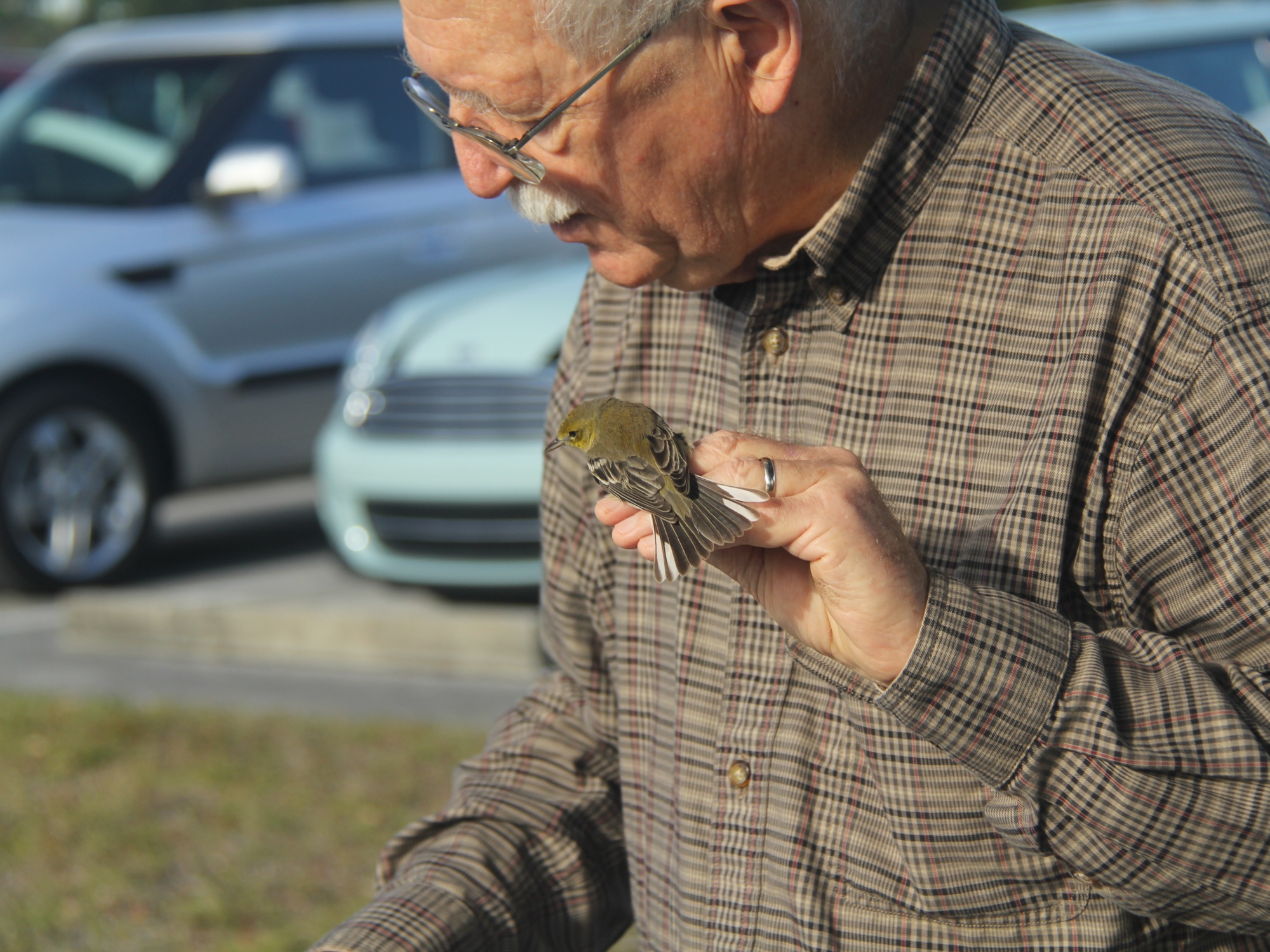Date: 29 February 2016 Temperature: 25ºC Weather: Sunny with occasional clouds
On day 3 of our Florida trip we visiting the Florida Gulf Coast University (FGCU) where we got to participate in bird banding, went slogging through a Cypress dome, learned about rattlesnake tracking on the campus and learned about the Florida panther.
Bird Banding
The first thing we did when we arrived on campus is meet up with Prof. Jerome Jackson (Jerry) where we learned about the history of bird banding and also got to experience for the first time the use of mist nets.
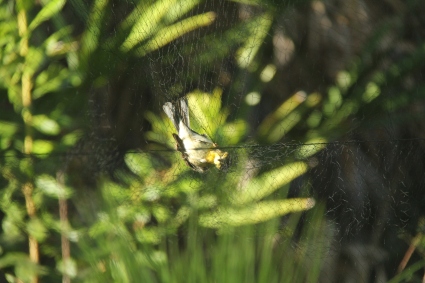
Bird banding was first started in 1899 by Hans Christian Cornelius Mortensen in Scandinavia using zinc bands placed on birds to track their movements. In 1906, bird banding made its way to North America and in 1911 the American Bird Banding Association was formed; which has since been divided into the Eastern, Western and Inland Bird Banding Associations.
In 1918, the Migratory Birds Treaty Act was signed between Canada, Mexico and the United States to protect migratory birds which lead to the requirement of bird banders to get licences for their activities.
Mist Nets
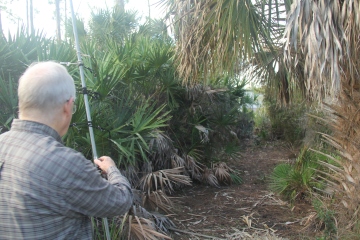
Three mist nets made of monofilament nylon were set up on campus in a slash pine (Pinus elliottii) stand. While setting up the mist nets we saw a red bellied woodpecker pecking at a slash pine tree likely looking for insects.
Prof. Jackson explained to us that slash pine ecosystems burn cool fires do not cause a lot of damage. One of the reasons for the minimal damage is due to the bark on the pine which is resistant to fire. Additionally, the fires burn really fast due to the nature of the pine needles. The needles are spiraled and three fascicled, meaning they grow in bundles of three. When they fall they land in ways that allows oxygen to move through them allowing the fire to burn faster.
The following video shows how properly to remove a bird after it has been caught in a mist net so as to not injure the bird.
Bird Processing
We processed three birds: a yellow rumped warbler, a pine warbler and a catbird, noting the age of each species at the time of identification. The wing and tail lengths were measured and the birds were fitted with aluminum bands issued by the U.S. and Canadian Wildlife Service that contain unique numbers so that the bird can be later identified.
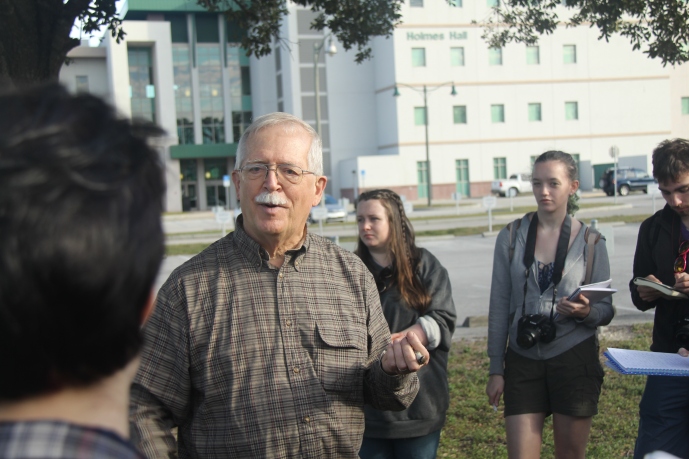
FGCU Wetlands
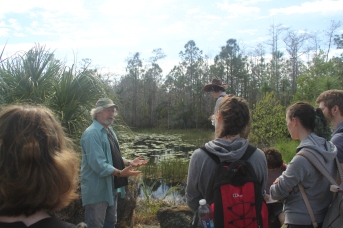
After bird banding we met up with Prof. Edwin Everham (Win) where we discussed the wetlands on campus. He informed us that over 50% of the FGCU campus is on preserve lands; however, that could change with pressures for expansion. In the U.S. a no-net-loss policy requires that every cubic meter of wetland destroyed has to be counteracted by constructed wetlands. On the FGCU campus, that has been done in the form of a storm retention pond with the oldest pond having been built in 1996.
According to Win, the original method of building the wetlands was to make them deeper in order to store the most water with minimal loss of space. More recently, the wetlands have been constructed to mimic the natural environment, such as broad shallow wetlands.
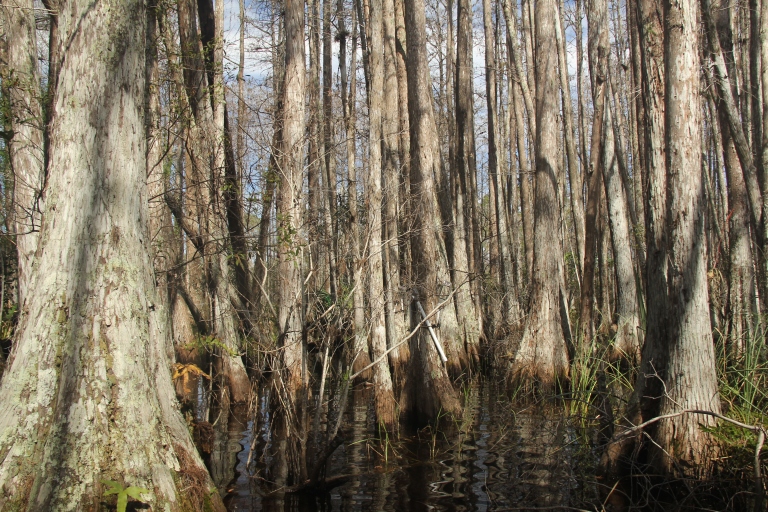
Cypress Dome
Prof. Everham then took us to visit a cypress dome that was incredibly wet due to the unusually wet dry season that they were having. Prior to entering the dome, we got to see a clear ecotone between the pine and cypress trees that is kept open by fire.
Win also explained that the pine trees grow in areas where the ground is only centimeters higher than the cypress trees allowing them to grow in soil that is not waterlogged.
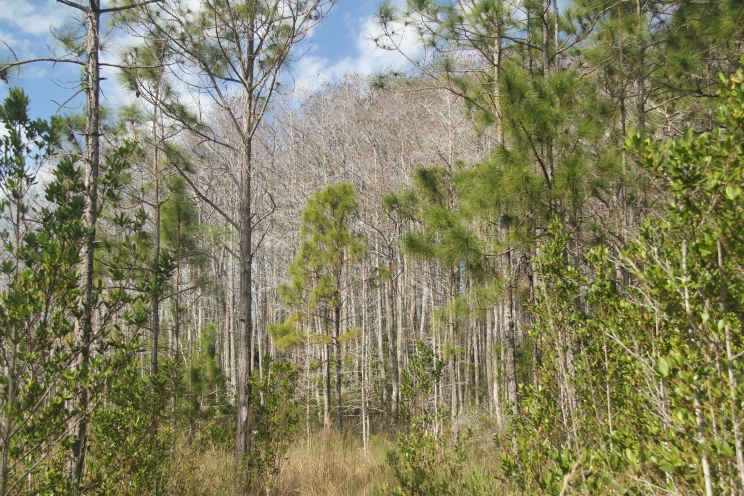
While standing in the ecotone, you can get an idea of the shape of the dome and where it got its name. Shorter trees grow on the outside and taller trees grow in the middle.
Once in the dome it was exciting to see the adaptations of the trees that allow them to live in water logged conditions such as buttress roots and cypress knees. We also spotted some plants and animals that are well adapted to living in waterlogged conditions such as alligator flag (Thalia geniculata) and an Eastern ribbon snake (Thamnophis sauritus sauritus) that might have been hunting as indicated by its high activity level.
Rattle Snakes
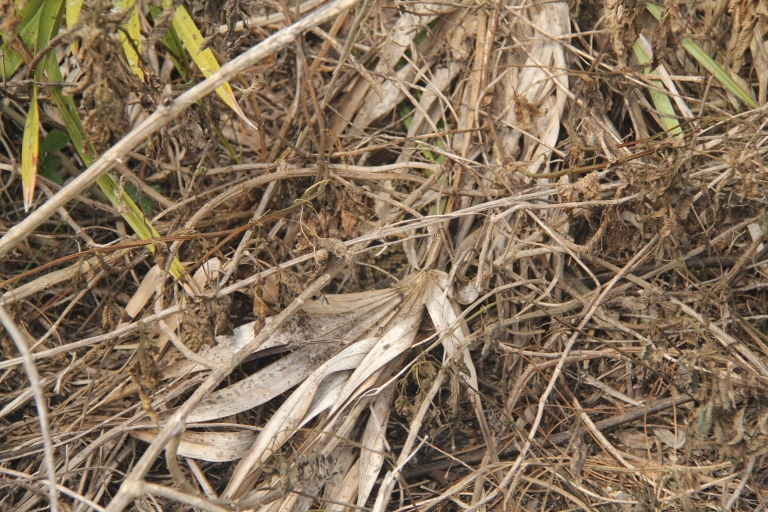
If you look closely you can see the female rattlesnake under the leaves. Photo credit: Shantelle Friesen
After our wetlands walk we got to briefly meet up with John Herman, an Assistant Professor in Biology. He showed us one of the female rattlesnakes he has been tracking on campus using radio transmitters.
His research has identified that the snakes prefer to use the edge habitats to move around the campus. The snake we saw was hiding just meters from the road and barely visible due to its camouflage.
Florida Panthers
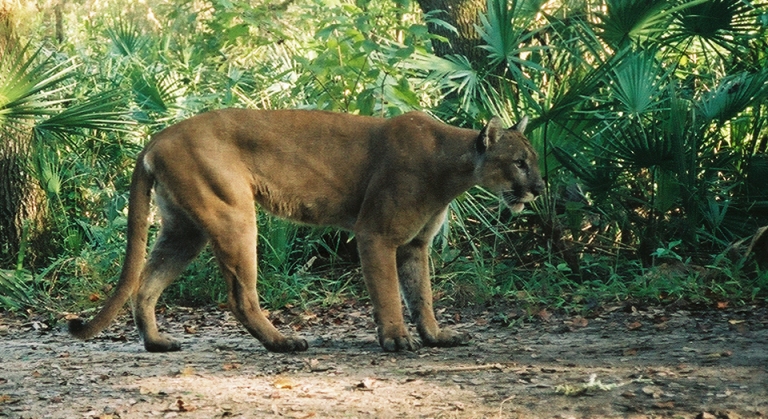
The last stop of the day was at FGCU’s Wings of Hope program, where we met with Ricky Pires and Melinda Lynch for a presentation on the endangered Florida panther (Puma concolor). The program was developed to teach 4th and 5th grade students about the importance of protecting the panther.
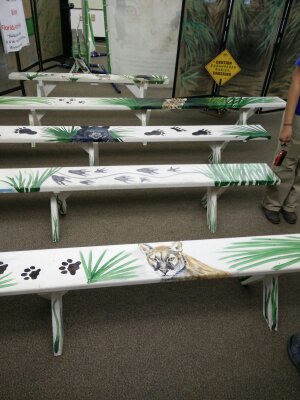
There are currently only 180 Florida panthers left in the world, of which only 16 have radio collars. Their primary threat of the panther is cars, which caused the loss of 40 panthers in 2015 alone. Their other threats are diseases such as feline leukemia, battles between panthers for territory and habitat loss.
Conservation efforts have involved the use of radio collars and infrared cameras to track the animals, as well as the construction of wildlife underpasses such as the one under the I75.
Another concern for their future is the risk of inbreeding due to the small population size. In the past they brought in 8 Texas cougars to help increase the genepool to reduce the risk of heart murmurs.
We finished the day by enjoying feeling like a kid again while playing with the various activities they had set up for the 4th and 5th grade students who usually visit the program.
The following video highlights some of the additional conservation efforts taking place in Florida to secure the future of the Florida panther.
References
U.S. Geological Survey 2016. A Brief History about the origins of Bird Banding. [Online]. Available at: https://www.pwrc.usgs.gov/BBL/homepage/historyNew.cfm. Accessed: April 5 2016.
